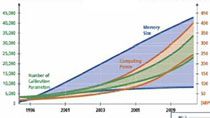Predictive Maintenance with MATLAB: A Data-Based Approach
Overview
Do you work with operational equipment that collects sensor data? In this seminar, you will learn how you can utilize that data for Predictive Maintenance, the intelligent health monitoring of systems to avoid future equipment failure. Rather than following a traditional maintenance timeline, predictive maintenance schedules are determined by analytic algorithms and data from sensors. With predictive maintenance, organizations can identify issues before equipment fails, pinpoint the root cause of the failure, and schedule maintenance as soon as it’s needed.
Highlights
- Accessing and preprocessing data from a variety of sources
- Using machine learning to develop predictive models
- Creating dashboards for visualizing and interacting with model results
- Deploying predictive algorithms in production systems and embedded devices
- Using simulation to generate data for expensive or hard-to-reproduce failures
About the Presenters
Russell Graves is an Application Engineer at MathWorks focused on machine learning and systems engineering. Prior to joining MathWorks, Russell worked with the University of Tennessee and Oak Ridge National Laboratory in intelligent transportation systems research with a focus on multi-agent machine learning and complex systems controls. Russell holds a B.S. and M.S. in Mechanical Engineering from The University of Tennessee and is a late-stage mechanical engineering doctoral candidate.
Recorded: 26 Oct 2021




